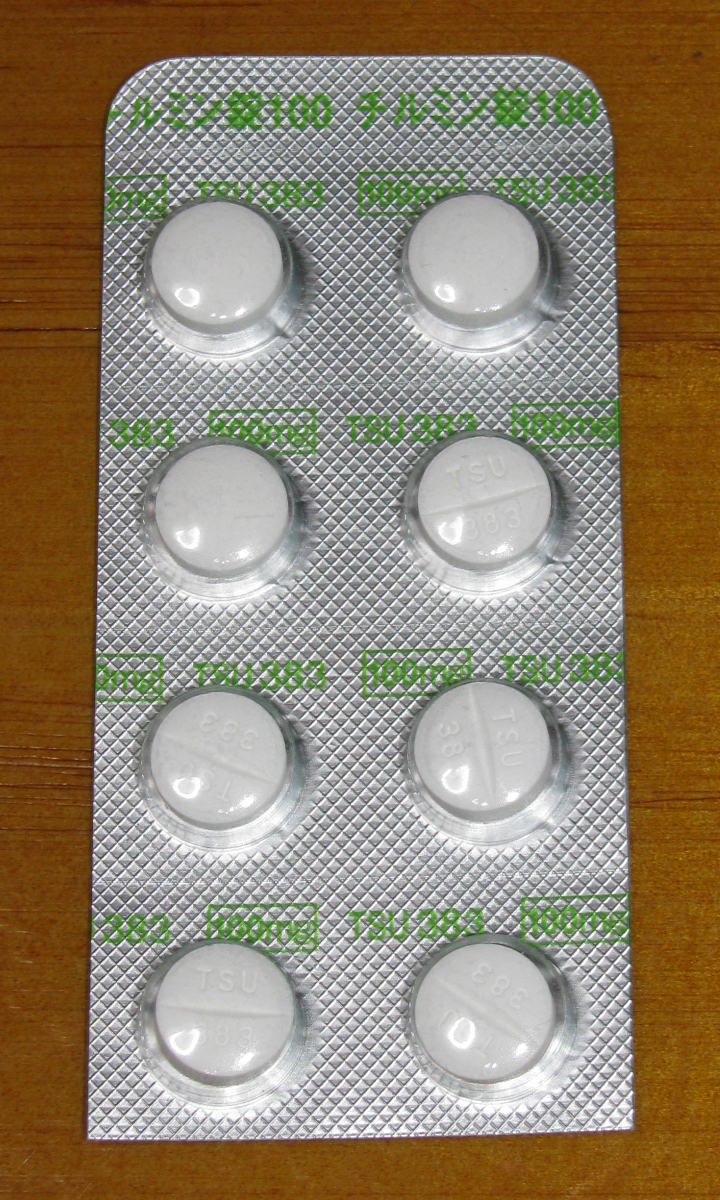|
Codrug
A codrug consists of two drug Moiety (chemistry), moieties, generally "active against the same disease", that are joined through one or more covalent bond, covalent chemical bonds to create a single new chemical entity; they can also be described as a mutual prodrug, recognising that a catabolism, catabolic biosynthesis, biosynthetic step is most often required to liberate the two drugs. While acting against the same disease, the two moities may operate via different mechanism of drug action, mechanisms of action, and so display differing specific therapeutic effects. The recognised advantages of a codrug approach to small molecule drug design include the possibilities of (i) combined efficacies of the two drugs that are therapeutically synergistic, (ii) altered properties that improve the pharmacokinetics (e.g., halflife) of the codrug over its individually administered components (iii) improved modes of drug delivery, and (iv) masking of reactive functional groups of each compon ... [...More Info...] [...Related Items...] OR: [Wikipedia] [Google] [Baidu] |
Fenethylline
Fenethylline (British Approved Name, BAN, United States Adopted Name, USAN) or fenetylline (International Nonproprietary Name, INN) is a codrug of amphetamine and theophylline and so a mutual prodrug of both. It is also spelled phenethylline; other names for it are amphetaminoethyltheophylline and amfetyline. The drug was marketed for use as a psychostimulant under the brand names Captagon, Biocapton, and Fitton. The brand name "Captagon" (or in lowercase as "captagon") is often used Generic drug, generically to describe illicitly produced fenethylline. Fenethylline is now illegal in most countries. It is produced primarily for illicit use, which takes place mainly in the Middle East, with some evidence that it is used by Islamism, Islamist militants and Islamic terrorism, terrorists, as stimulants for gunmen. The illicit global market for the drug was estimated in 2023 to be worth approximately US$ 57 billion. Smuggling of Captagon became Syria's principal export, exceeding ... [...More Info...] [...Related Items...] OR: [Wikipedia] [Google] [Baidu] |
Cod-THC
Cod-THC (Codeine Δ9-tetrahydrocannabinol carbonate) is a synthetic codrug formed by linking tetrahydrocannabinol with codeine via a carbonate bridge. It is well absorbed orally and shows superior analgesic effects in animal studies compared to a simple mixture of the two drugs. See also * Benorilate * Codeine-6-glucuronide * Fenethylline Fenethylline (British Approved Name, BAN, United States Adopted Name, USAN) or fenetylline (International Nonproprietary Name, INN) is a codrug of amphetamine and theophylline and so a mutual prodrug of both. It is also spelled phenethylline; ... * THC-methylcarbonate * THC-O-acetate * THC-VHS References Benzochromenes Cannabinoids Carbonate esters Heterocyclic compounds with 5 rings Methoxy compounds Nitrogen heterocycles Codrugs {{cannabinoid-stub ... [...More Info...] [...Related Items...] OR: [Wikipedia] [Google] [Baidu] |
Sultamicillin
Sultamicillin, sold under the brand name Unasyn among others, is an oral form of the penicillin antibiotic combination ampicillin/sulbactam. It is used for the treatment of bacterial infections of the upper and lower respiratory tract, the kidneys and urinary tract, skin and soft tissues, among other organs. It contains esterified ampicillin and sulbactam. Sultamicillin is better absorbed from the gut than ampicillin/sulbactam, decreasing the chances of diarrhea and dysentery. The inclusion of sulbactam extends ampicillin's spectrum of action to beta-lactamase producing strains of bacteria. Oral sulbactam with the intravenous form provides a regimen of continuous sulbactam therapy throughout the treatment, resulting in better clinical results. It was patented in 1979 and approved for medical use in 1987. Medical uses Medical uses for sultamicillin include: * Skin and soft tissue infections - furuncles, carbuncles, cellulitis, paronychia, impetigo contagiosa, diabetic foo ... [...More Info...] [...Related Items...] OR: [Wikipedia] [Google] [Baidu] |
Benorylate
Benorilate (INN), or benorylate, is an ester-linked codrug of aspirin with paracetamol. It is used as an anti-inflammatory and antipyretic medication. In the treatment of childhood fever, it has been shown to be inferior to paracetamol and aspirin taken separately. In addition, because it is converted to aspirin, benorylate is not recommended in children due to concerns about Reye syndrome. Synthesis Acetyl salicoyl chloride (1) is reacted with paracetamol (2) to give benorilate (3). Partial saponification Saponification is a process of cleaving esters into carboxylate salts and Alcohol (chemistry), alcohols by the action of aqueous alkali. Typically aqueous sodium hydroxide solutions are used. It is an important type of alkaline hydrolysis. When the ... of benorilate leads to acetaminosalol (phenetsal). References Analgesics Antipyretics Codrugs {{analgesic-stub ... [...More Info...] [...Related Items...] OR: [Wikipedia] [Google] [Baidu] |
Sulfasalazine
Sulfasalazine, sold under the brand name Azulfidine among others, is a medication used to treat rheumatoid arthritis, ulcerative colitis, and Crohn's disease. It is considered by some to be a first-line treatment in rheumatoid arthritis. It is taken by mouth or can be administered rectally. Significant side effects occur in about 25% of people. Commonly these include loss of appetite, nausea, headache, and rash. Severe side effects include bone marrow suppression, liver problems, Stevens–Johnson syndrome, and kidney problems. It should not be used in people allergic to aspirin or sulfonamide. Use during pregnancy appears to be safe for the baby. Sulfasalazine is in the disease-modifying antirheumatic drugs (DMARDs) family of medications. It is unclear exactly how it works. One proposed mechanism is the inhibition of prostaglandins, resulting in local anti-inflammatory effects in the colon. The medication is broken down by intestinal bacteria into sulfapyridine and 5-ami ... [...More Info...] [...Related Items...] OR: [Wikipedia] [Google] [Baidu] |
Paracetamol
Paracetamol, or acetaminophen, is a non-opioid analgesic and antipyretic agent used to treat fever and mild to moderate pain. It is a widely available over-the-counter drug sold under various brand names, including Tylenol and Panadol. Paracetamol relieves pain in both acute mild migraine and episodic tension headache. At a standard dose, paracetamol slightly reduces fever, though it is inferior to ibuprofen in that respect and the benefits of its use for fever are unclear, particularly in the context of fever of viral origins. The aspirin/paracetamol/caffeine combination also helps with both conditions when the pain is mild and is recommended as a Therapy#Lines of therapy, first-line treatment for them. Paracetamol is effective for post-surgical pain, but is inferior to ibuprofen for this purpose. The paracetamol/ibuprofen combination increases the drugs' potency and is superior to either drug alone. The pain relief paracetamol provides in osteoarthritis is small and clinica ... [...More Info...] [...Related Items...] OR: [Wikipedia] [Google] [Baidu] |
Vancomycin
Vancomycin is a glycopeptide antibiotic medication used to treat certain bacterial infections. It is administered intravenously ( injection into a vein) to treat complicated skin infections, bloodstream infections, endocarditis, bone and joint infections, and meningitis caused by methicillin-resistant ''Staphylococcus aureus''. Blood levels may be measured to determine the correct dose. Vancomycin is also taken orally (by mouth) to treat ''Clostridioides difficile'' infections. When taken orally, it is poorly absorbed. Common side effects include pain in the area of injection and allergic reactions. Occasionally, hearing loss, low blood pressure, or bone marrow suppression occur. Safety in pregnancy is not clear, but no evidence of harm has been found, and it is likely safe for use when breastfeeding. It is a type of glycopeptide antibiotic and works by blocking the construction of a cell wall. Vancomycin was approved for medical use in the United States in 1 ... [...More Info...] [...Related Items...] OR: [Wikipedia] [Google] [Baidu] |
Cefilavancin
Cefilavancin (TD-1792) is an experimental antibiotic medication developed for the treatment of bacterial infections such as drug-resistant strains of ''Staphylococcus aureus''. It is a prodrug which is also a codrug, injected intravenously and then cleaved inside the body to two active components, one of which is a modified form of vancomycin and the other a cephalosporin The cephalosporins (sg. ) are a class of β-lactam antibiotics originally derived from the fungus '' Acremonium'', which was previously known as ''Cephalosporium''. Together with cephamycins, they constitute a subgroup of β-lactam antibio ... antibiotic. In clinical trials cefilavancin has shown similar efficacy with reduced side effects compared to vancomycin itself. See also * Rifaquizinone References {{reflist Antibiotics Heterocyclic compounds with 7 or more rings Carboxamides Amides Chloroarenes Thiazoles Pyridinium compounds Carboxylate anions Zwitterions Polyols Thiazines Azet ... [...More Info...] [...Related Items...] OR: [Wikipedia] [Google] [Baidu] |
Sulbactam
Sulbactam is a β-lactamase inhibitor. This drug is given in combination with β-lactam antibiotics to inhibit β-lactamase, an enzyme produced by bacteria that destroys the antibiotic An antibiotic is a type of antimicrobial substance active against bacteria. It is the most important type of antibacterial agent for fighting pathogenic bacteria, bacterial infections, and antibiotic medications are widely used in the therapy ...s. It was patented in 1977 and approved for medical use in 1986. Medical uses The combination ampicillin/sulbactam (Unasyn) is available in the United States. The combination cefoperazone/sulbactam (Sulperazon) is available in many countries but not in the United States. The co-packaged combination sulbactam/durlobactam was approved for medical use in the United States in May 2023. Mechanism Sulbactam is primarily used as a suicide inhibitor of β-lactamase, shielding more potent beta-lactams such as ampicillin. Sulbactam itself contains a ... [...More Info...] [...Related Items...] OR: [Wikipedia] [Google] [Baidu] |
Ampicillin
Ampicillin is an antibiotic belonging to the aminopenicillin class of the penicillin family. The drug is used to prevent and treat several bacterial infections, such as respiratory tract infections, urinary tract infections, meningitis, salmonellosis, and endocarditis. It may also be used to prevent group B streptococcal infection in newborns. It is used by mouth, by injection into a muscle, or intravenously. Common side effects include rash, nausea, and diarrhea. It should not be used in people who are allergic to penicillin. Serious side effects may include ''Clostridioides difficile'' colitis or anaphylaxis. While usable in those with kidney problems, the dose may need to be decreased. Its use during pregnancy and breastfeeding appears to be generally safe. Ampicillin was discovered in 1958 and came into commercial use in 1961. It is on the World Health Organization's List of Essential Medicines. The World Health Organization classifies ampicillin as critical ... [...More Info...] [...Related Items...] OR: [Wikipedia] [Google] [Baidu] |
Theophylline
Theophylline, also known as 1,3-dimethylxanthine, is a drug that inhibits phosphodiesterase and blocks adenosine receptors. It is used to treat chronic obstructive pulmonary disease (COPD) and asthma. Its pharmacology is similar to other methylxanthine drugs (e.g., theobromine and caffeine). Trace amounts of theophylline are naturally present in tea, coffee, chocolate, yerba maté, guarana, and kola nut. The name 'theophylline' derives from "Thea"—the former genus name for tea + Legacy Greek φύλλον (phúllon, "leaf") + -ine. Medical uses The main actions of theophylline involve: * relaxing bronchial smooth muscle * increasing heart muscle contractility and efficiency (positive inotrope) * increasing heart rate (positive chronotropic) * increasing blood pressure * increasing renal blood flow * anti-inflammatory effects * central nervous system stimulatory effect, mainly on the medullary respiratory center The main therapeutic uses of theophylline are for treat ... [...More Info...] [...Related Items...] OR: [Wikipedia] [Google] [Baidu] |
Amphetamine
Amphetamine (contracted from Alpha and beta carbon, alpha-methylphenethylamine, methylphenethylamine) is a central nervous system (CNS) stimulant that is used in the treatment of attention deficit hyperactivity disorder (ADHD), narcolepsy, and obesity; it is also used to treat binge eating disorder in the form of its inactive prodrug lisdexamfetamine. Amphetamine was discovered as a chemical in 1887 by Lazăr Edeleanu, and then as a drug in the late 1920s. It exists as two enantiomers: levoamphetamine and dextroamphetamine. ''Amphetamine'' properly refers to a specific chemical, the Racemic mixture, racemic free base, which is equal parts of the two enantiomers in their pure amine forms. The term is frequently used informally to refer to any combination of the enantiomers, or to either of them alone. Historically, it has been used to treat nasal congestion and depression. Amphetamine is also used as an Performance-enhancing substance, athletic performance enhancer and Nootropic ... [...More Info...] [...Related Items...] OR: [Wikipedia] [Google] [Baidu] |



